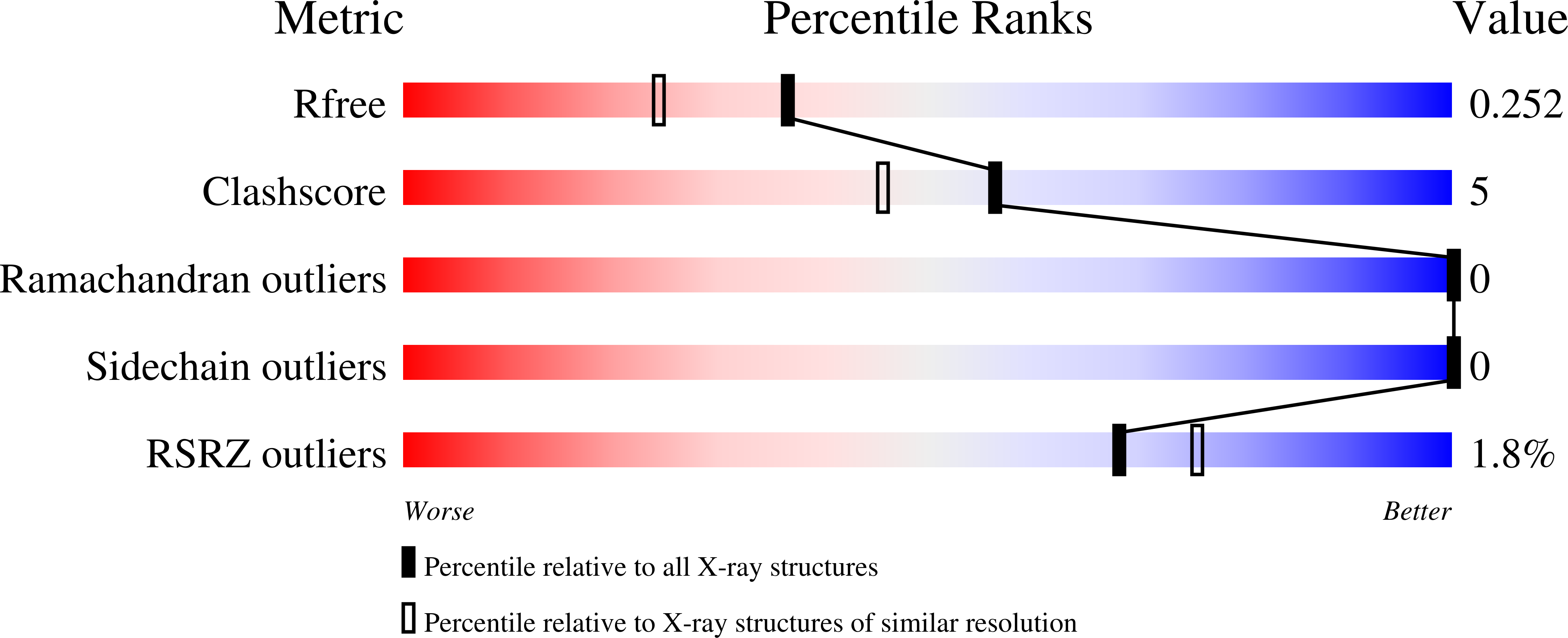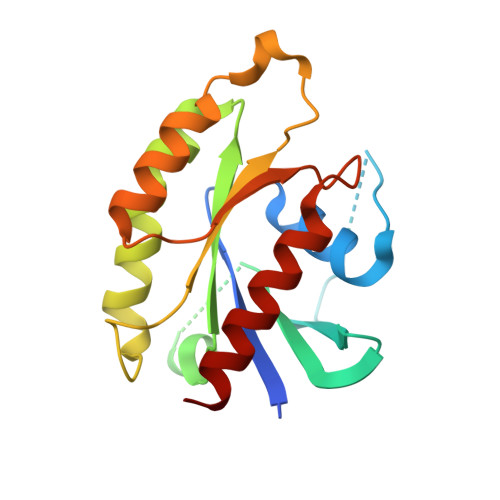Locking GTPases covalently in their functional states.
Wiegandt, D., Vieweg, S., Hofmann, F., Koch, D., Li, F., Wu, Y.W., Itzen, A., Muller, M.P., Goody, R.S.(2015) Nat Commun 6: 7773-7773
- PubMed: 26178622
- DOI: https://doi.org/10.1038/ncomms8773
- Primary Citation of Related Structures:
4PHF, 4PHG, 4PHH - PubMed Abstract:
GTPases act as key regulators of many cellular processes by switching between active (GTP-bound) and inactive (GDP-bound) states. In many cases, understanding their mode of action has been aided by artificially stabilizing one of these states either by designing mutant proteins or by complexation with non-hydrolysable GTP analogues. Because of inherent disadvantages in these approaches, we have developed acryl-bearing GTP and GDP derivatives that can be covalently linked with strategically placed cysteines within the GTPase of interest. Binding studies with GTPase-interacting proteins and X-ray crystallography analysis demonstrate that the molecular properties of the covalent GTPase-acryl-nucleotide adducts are a faithful reflection of those of the corresponding native states and are advantageously permanently locked in a defined nucleotide (that is active or inactive) state. In a first application, in vivo experiments using covalently locked Rab5 variants provide new insights into the mechanism of correct intracellular localization of Rab proteins.
Organizational Affiliation:
Department of Physical Biochemistry, Max Planck Institute of Molecular Physiology, Otto-Hahn-Strasse 11, 44227 Dortmund, Germany.

















